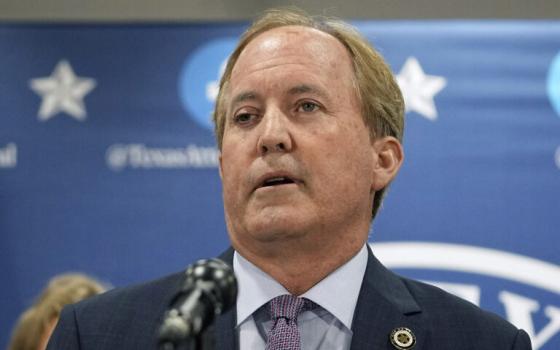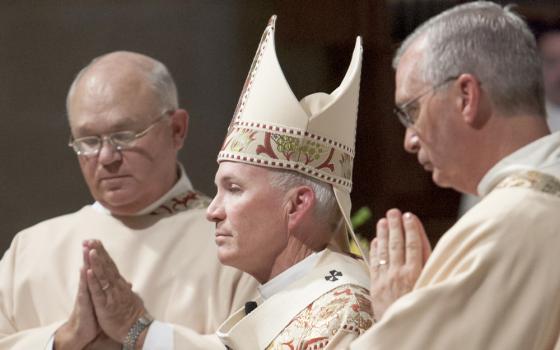There has been a change in much of Michigan's landscape in the last few years. From farm country in the Thumb on the east side of the state to the hill country near Ludington close to Michigan's west coast, majestic wind turbines dot the countryside. Gratiot County, among the poorest counties in the state, has been infused with new capital for education and for infrastructure.
The new construction of renewable energy technology has resulted in the creation of jobs and economic development in the community. According to a conversation I had with Donald Schurr, the president of Greater Gratiot Development, Inc., the wind farm of 133 industrial turbines has already benefitted the county in several ways: tax benefits, leasing of land, and royalties amounting to an estimated $2 million to be shared among 250 families. In addition, there are 50 new employees who are now part of the community.
With clean energy such as wind power, there are not the impacts on climate and on air quality from coal-fired power plants resulting in more mercury in the lakes and high asthma among Michigan's urban poor. Too often, these public health and environmental impacts are treated as externalities, and their true social/public health costs are not factored.
An externality often overlooked with dependence on fossil fuel is the sieving of dollars that leave the local community to acquire fuel. Last year, an estimated $24 billion left Michigan to pay for the importation of fossil fuel. Distributed energy production brings an entirely new economic dynamic. Dollars produced in the local community tend to remain in the local community resulting in a multiplier effect of up to fourfold.
Types of renewable energy
In addition to wind, renewable energy technologies include solar/electric power;, biomass, such as ethanol; and hydropower. There are other renewable technologies that use the heat energy of the sun, such as solar hot-water heaters and solar attic fans.
Fixed demand model
This new development has been spurred by Michigan's Renewables Portfolio Standard. As a result of legislation passed in 2008, Michigan is required to have 10 percent of its energy produced from renewable sources by 2015. A Renewables Portfolio Standard (RPS) is an example of a fixed demand model to increase the energy base load of renewable energy in a state. Currently, 31 states have RPS or "Alternative Energy Portfolio Standards" (AEPS) legislation on their books. Seven other states have written voluntary targets to produce a certain amount of renewable energy by a particular date. Most states' goals are far more ambitious than Michigan's, with goals of up to 40 percent in Hawaii and several states with targets of 25 percent.
This fall, there is a ballot initiative that would reset Michigan's renewable standard to 25 percent by the year 2025. I will share the particulars of the ethical issues raised in the next few weeks. However, there is another pathway for transition toward a renewable economy.
Fixed price model
That model adopted by Ontario and many European countries, most successfully in Germany, is a fixed price model. Or as it is more commonly known, a feed-in tariff. Feed-in tariffs guarantee a set price for a renewable technology for a significant time, usually 20 years. Knowing that there will be a set price for several years takes much of the guesswork out of the investor in the technology.
Clean Coalition and Paul Gipe's website have much more information on feed-in tariffs. I will explore the German and Ontario experience with the fixed price model in a future column.
Liberal/conservative
Like the farm bill in the U.S. Congress, both the supporters and the critics of the renewable energy initiative in Michigan do not follow strict ideological lines. Many Democratic organizations support the ballot initiative because it will create new jobs and be a boost to the Michigan economy. Many Republicans support the initiative because it provides more choice and economic freedom. In addition, not only are many faith-based groups, including evangelicals, supportive as stewarding of God's creation, but so are organizations such as the American Lung Association. Opposition ranges from discomfort with any ballot initiative (ballot initiatives tamper with Michigan's constitution) to concern that utility costs will rise.
Subsidizing renewable energy
One critique of Renewables Portfolio Standards is that by the mandate, the market is compromised. We end up playing favorites. However, as the Environmental Law Institute points out, there is no free market when it comes to fuel subsidies. From the fiscal years 2002 to 2008, the federal government subsidized fossil fuels at $72.5 billion, and renewable energy at $29 billion.
Catholic church
The Michigan Catholic Conference has yet to take a position either in support or opposed to the 25X25 ballot initiative.




